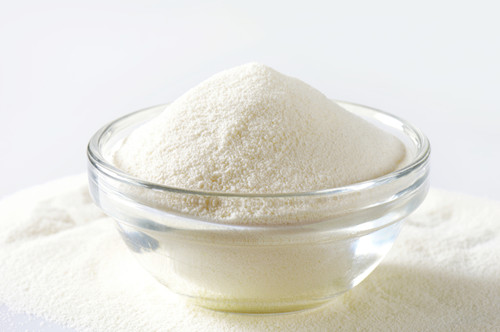Approval status
As of now, China has officially approved 15 lactose-free/low-lactose infant formulas for special medical purposes. These are designed for infants aged 0 to 12 months with lactose intolerance.
The 15 products consist of 12 domestic formulas and three imported ones from 14 companies. Among these, Wissun International has had two formulas approved, while the other 13 companies each have had one. All 15 products are in powdered form. Notably, only one low-lactose formula for special medical purposes has been approved, which is Neng Dun by Wissun International.

The product details are as follows:
Table 1 15 approved lactose-free/low-lactose infant formulas for special medical purposes
S.N. | Applicant | Product name | Dosage form | Registration number |
1 | Hangzhou BEINMATE | Beinmate | Powder | 國食注字TY20180001 |
2 | Mead Johnson | An Er Bao (安兒寶) | Powder | 國食注字TY20185005 |
3 | NESTLE | An Er Ning Neng En (安兒寧能恩) | Powder | 國食注字TY20195003 |
4 | Maeil Dairies Co., Ltd | Ai Si Nuo Fu Er Jia (愛思諾賦兒嘉) | Powder | 國食注字TY20195009 |
5 | Tianjin Aumix | Li Nuo Kang Ning (力諾康寧) | Powder | 國食注字TY20190006 |
6 | Synutra International Inc. | You Bo Rui An (優博瑞安) | Powder | 國食注字TY20190009 |
7 | Beian Yeeper Dairy | Bao An Su (葆安素) | Powder | 國食注字TY20210002 |
8 | Ausnutria | Zhi Shu (稚舒) | Powder | 國食注字TY20210005 |
9 | Heilongjiang Feihe | Bei Shu Xiao (蓓舒消) | Powder | 國食注字TY20210008 |
10 | Wissun International | An Ni Er (安尼爾) | Powder | 國食注字TY20210009 |
11 | AusNuotore | AusNuotore You An Li (愛優諾優安力) | Powder | 國食注字TY20220003 |
12 | Qingdao Shengtong | Te Ai Rui An (特愛瑞安) | Powder | 國食注字TY20230021 |
13 | Wissun International | Neng Dun (能盾) | Powder | 國食注字TY20230050 |
14 | Zhejiang Kelubao | Jia Fu Bao (嘉復褓) | Powder | 國食注字TY20230054 |
15 | Shijiazhuang Junlebao | Yi An Xiao (怡安消) | Powder | 國食注字TY20240015 |
Formula characteristics
Lactose-free or low-lactose infant formulas for special medical purposes are designed for infants with primary or secondary lactose intolerance. In these formulas, alternative carbohydrates such as – sucrose, glucose, corn syrup, dextrin, or maltodextrin – are used to replace some or all of the lactose found in regular infant formulas. This helps to manage lactose intolerance effectively while ensuring the normal growth and development of infants.
Table 2 Energy density and energy supply ratios of nutrients*
S.N. | Product name | Energy density kcal/mL | Energy supply ratio of protein | Energy supply ratio of fat | Energy supply ratio of total carbohydrate | Energy supply ratio of linoleic acid | Energy supply ratio of α-linolenic acid |
1 | Beinmate | 0.68 | 9.5% | 46.5% | 43.6% | 8.0% | 0.8% |
2 | An Er Bao (安兒寶) | 0.67 | 8.6% | 48.1 % | 43.4% | 8.4% | 0.7% |
3 | An Er Ning Neng En (安兒寧能恩) | 0.67 | 8.3% | 44.2% | 47.4% | 7.1% | 0.6% |
4 | Ai Si Nuo Fu Er Jia (愛思諾賦兒嘉) | 0.69 | 9.1% | 43.0% | 47.8% | 8.6% | 0.8% |
5 | Li Nuo Kang Ning (力諾康寧) | 0.66 | 9.4% | 43.5% | 47.0% | 5.8% | 0.6% |
6 | You Bo Rui An (優博瑞安) | 0.66 | 10.5% | 45.7% | 43.9% | 8.1% | 1.0% |
7 | Bao An Su (葆安素) | 0.65 | 9.8% | 44.5% | 45.8% | 8.0% | 0.8% |
8 | Zhi Shu (稚舒) | 0.69 | 8.8% | 47.8% | 43.2% | 7.0% | 0.8% |
9 | Bei Shu Xiao (蓓舒消) | 0.64 | 8.6% | 46.7% | 44.0% | 5.7% | 0.6% |
10 | An Ni Er (安尼爾) | 0.65 | 9.0% | 43.3% | 45.4% | 5.4% | 0.5% |
11 | AusNuotore You An Li (愛優諾優安力) | 0.62 | 9.4% | 44.1% | 46.6% | 7.9% | 0.8% |
12 | Te Ai Rui An (特愛瑞安) | 0.66 | 10.5% | 45.7% | 43.9% | 8.1% | 1.0% |
13 | Neng Dun (能盾) | 0.65 | 9.3% | 43.4% | 47.3% | 5.6% | 0.6% |
14 | Jia Fu Bao (嘉復褓) | 0.67 | 9.9% | 45.4% | 43.9% | 7.4% | 0.9% |
15 | Yi An Xiao (怡安消) | 0.65 | 9.7% | 46.4% | 43.6% | 6.5% | 0.9% |
*Energy density and nutrient energy ratios are calculated based on the product labels.
Energy density
According to GB 25596, lactose-free or low-lactose infant formulas for special medical purposes should contain 250 kJ (60 kcal) to 295 kJ (70 kcal) of energy per 100 mL in the final product ready for use. This is equivalent to an energy density of 0.6 kcal to 0.7 kcal/mL, which complies with the National Food Safety Standard – Infant Formula (GB 10765). The energy densities of the 15 approved products range from 0.62 kcal to 0.69 kcal/mL.
Protein
According to GB 25596, the protein content in these formulas should be between 0.45 g and 0.70 g per 100 kJ, which corresponds to a protein energy ratio of 7.65% to 11.9%. The protein must come from milk protein, which is recognized for its complete essential amino acid profile and easy absorption by the human body. The 15 approved products have a protein energy ratio ranging from 8.3% to 10.5%.
In terms of protein sources, these formulas primarily use a combination of whey protein isolate and casein. Whey protein isolate, a high-purity protein derived from further processing of concentrated whey, is easily digestible and absorbable. Casein, on the other hand, does not require prior denaturation for hydrolysis by caseinase and is also readily absorbed by infants. Therefore, both whey protein isolate and casein are frequently used in these formulas.
Table 3 Ingredient sources of protein
S.N. | Ingredient source | Frequency |
1 | Casein | 10 |
2 | Whey protein isolate | 9 |
3 | Whey protein powder | 4 |
4 | Potassium caseinate/Calcium caseinate | 4 |
5 | Whole milk powder (lactose-free) | 3 |
6 | Concentrated milk protein | 2 |
7 | Hydrolyzed casein | 1 |
Fat
According to GB 25596, the fat content in these formulas should range from 1.05 g to 1.40 g per 100 kJ, which corresponds to a fat energy ratio of 38.85% to 51.8%. Fat plays a crucial role in providing essential nutrients for infants, supporting central nervous system development, and maintaining energy for the retina. The 15 approved products have fat energy ratios ranging from 43.0% to 47.8%.
Fat sources in these formulas typically include a mix of edible vegetable oils, such as coconut oil, maize oil, rapeseed oil, and sunflower seed oil. Coconut oil is rich in medium-chain fatty acids, which are easier for infants to digest and absorb compared to long-chain fatty acids. Maize oil, rapeseed oil, and sunflower seed oil are high in unsaturated fatty acids, providing both energy and essential fatty acids (linoleic acid and α-linolenic acid) for infants.
Table 4 Ingredient sources of fat
S.N. | Ingredient source | Frequency |
1 | Coconut oil | 15 |
2 | Maize oil | 10 |
3 | Rapeseed oil | 8 |
4 | Sunflower seed oil | 7 |
5 | Soybean oil | 5 |
6 | Low-erucic acid rapeseed oil | 4 |
7 | Anhydrous milk fat | 3 |
8 | 1,3-dioleic acid-2-palmitic acid triglyceride* | 2 |
9 | Linseed oil | 1 |
10 | Palm oil | 1 |
* Also used as a nutrition enhancer in the formulas
Carbohydrates
As specified in GB 25596, the carbohydrates content in these formulas should range from 2.2g to 3.3g/100kJ, which is equivalent to a carbohydrates energy ratio of 37.4% to 56.1%. The 15 approved products have carbohydrate energy ratios ranging from 43.2% to 47.8%. In formula design, a combination of glucose syrup and maltodextrin with other carbohydrates is often used to replace lactose. Maltodextrin is favored for its non-clumping properties, good solubility, and lower cost, while glucose syrup enhances product viscosity and improves texture. Both are commonly used in these formulas.
Table 5 Ingredient sources of carbohydrates
S.N. | Ingredient source | Frequency |
1 | Glucose syrup | 10 |
2 | Maltodextrin | 9 |
3 | Starch sugar (solid) | 4 |
4 | Solid corn syrup | 3 |
5 | Anhydrous glucose | 2 |
6 | Edible glucose | 2 |
7 | White granulated sugar | 2 |
The above information represents CIRS Group’s statistical analysis of energy density, macronutrient energy ratios, and ingredient sources, aimed at supporting companies in their formula development efforts.
For more information about the registration of FSMP in China, please click here to learn about our FSMP registration service.
If you need any assistance or have any questions, please get in touch with us via service@cirs-group.com.

